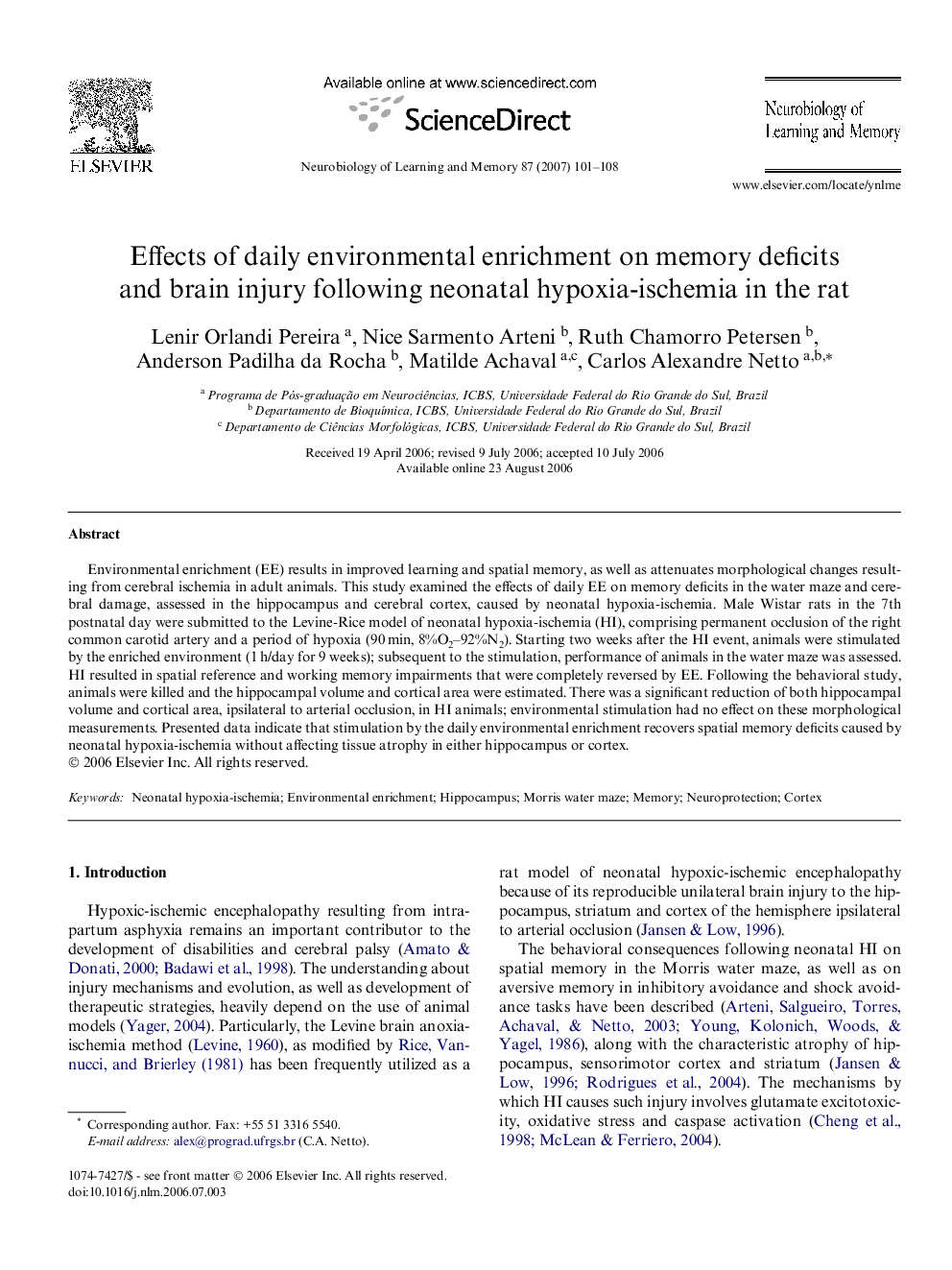| Article ID | Journal | Published Year | Pages | File Type |
|---|---|---|---|---|
| 937378 | Neurobiology of Learning and Memory | 2007 | 8 Pages |
Environmental enrichment (EE) results in improved learning and spatial memory, as well as attenuates morphological changes resulting from cerebral ischemia in adult animals. This study examined the effects of daily EE on memory deficits in the water maze and cerebral damage, assessed in the hippocampus and cerebral cortex, caused by neonatal hypoxia-ischemia. Male Wistar rats in the 7th postnatal day were submitted to the Levine-Rice model of neonatal hypoxia-ischemia (HI), comprising permanent occlusion of the right common carotid artery and a period of hypoxia (90 min, 8%O2–92%N2). Starting two weeks after the HI event, animals were stimulated by the enriched environment (1 h/day for 9 weeks); subsequent to the stimulation, performance of animals in the water maze was assessed. HI resulted in spatial reference and working memory impairments that were completely reversed by EE. Following the behavioral study, animals were killed and the hippocampal volume and cortical area were estimated. There was a significant reduction of both hippocampal volume and cortical area, ipsilateral to arterial occlusion, in HI animals; environmental stimulation had no effect on these morphological measurements. Presented data indicate that stimulation by the daily environmental enrichment recovers spatial memory deficits caused by neonatal hypoxia-ischemia without affecting tissue atrophy in either hippocampus or cortex.
